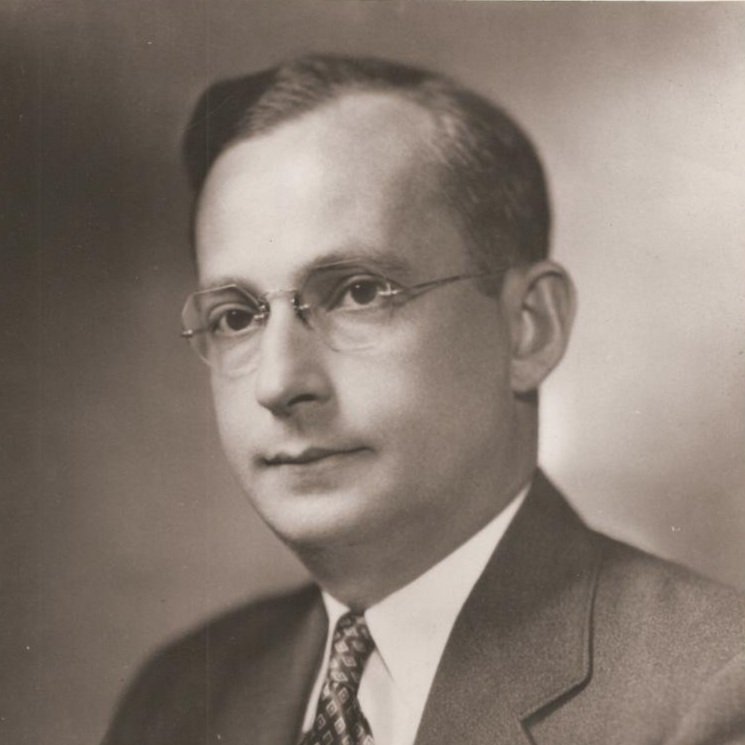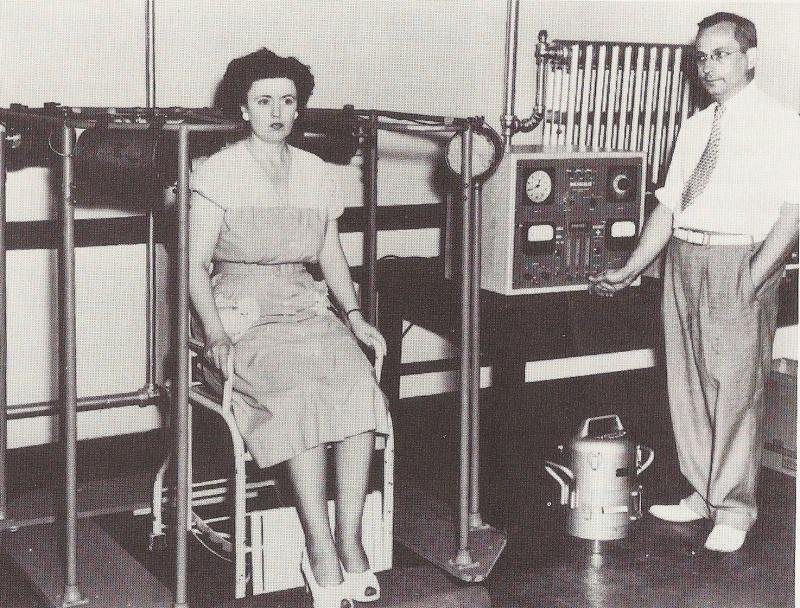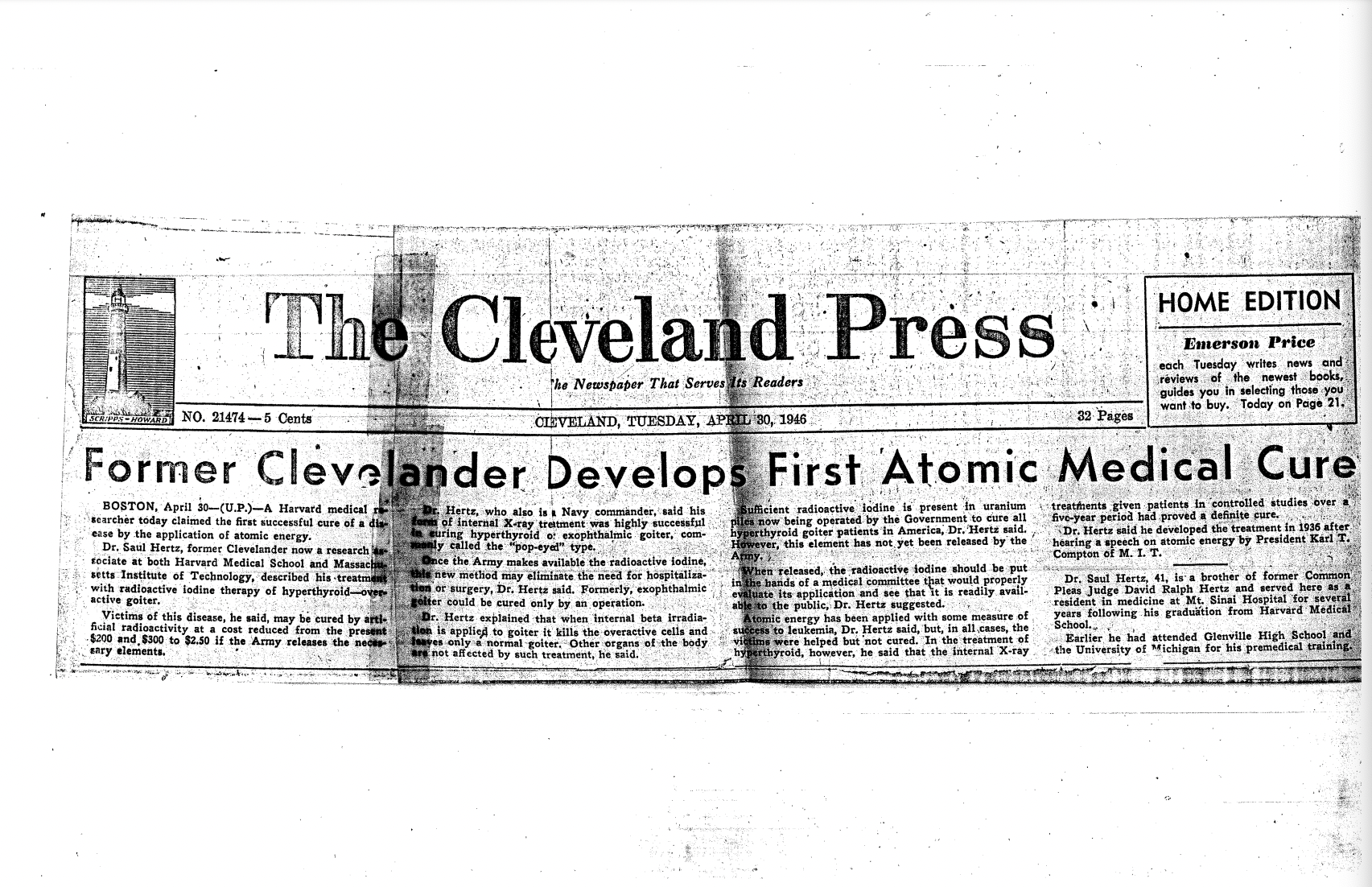Saul Hertz MD
1905 - 1950
“Could iodine be made radioactive artificially?”
“...my new research project is in Cancer of the Thyroid, which I believe holds the key to the larger problem of cancer in general.”
“The cure delivered on the wings of prayer was Dr Saul Hertz’s discovery, the miracle of radioactive iodine. Few can equal such a powerful and precious gift. ”
Saul Hertz was born in Cleveland April 20, 1905, received his M.D. from Harvard in 1929. He served as an instructor in clinical pathology and physical diagnosis in the Harvard Medical School and was later associate in medicine and in medical research at the Massachusetts General Hospital and Beth Israel Hospital in Boston.
He described the blood picture in exophthalmic goitre with Dr. J. Lerman in 1942, and the effect of pituitary injections on the parathyroid and thyroid in 1934 with Dr. Alfred Cranes. With Dr. J. H. Means he studied the nutritional factors in Graces’ disease, and in 1946 he presented a Plan for the Analysis of the Biologic Factors Involved in Thyroid Carcinogenesis. Dr. Hertz also studied the application of radioactive phosphorus and the influences of hormones on cancer as displayed by isotope studies. He was the director of the Radioactive Isotope Research Fund and Institute of Boston and in charge of the Radioactive Isotope Laboratory at the Massachusetts Women’s Hospital in Boston. He died unexpectedly in Boston July 28, 1950 from a heart attack.
Adapted biography from Jewish Medicine
Dr. Hertz did pioneer work in the field of the application of radioactive substances to medicine and originated the tracer and therapeutic applications of radioactive iodine. In collaboration with other investigators, he described the used of radioactive iodine in a series of publications. He was the author of several chapters in standard textbooks on endocrinology including in the treatment of hyperthyroidism or Graves’ disease, in thyroid and also in the production of total thyroidectomy in the treatment of certain cases of heart disease. He also investigated the effect of thyroid hormone on growth with Dr. Carlos Galli-Mainini in 1941.
The Legacy
The impact and legacy of Dr. Hertz’s discovery and his character had profound impact on the lives of those around him – both near and far. As a doctor, his legacy lives on with lives saved and suffering reduced. His memory is also held with documents of his time in application for the U.S. Navy during the war, as well as his grateful patients’ letters. In 2024, an application to President Biden was also made for Dr. Hertz to receive the United States Medal of Freedom.
Patient letters
Patient Letter to Mrs. Dane Author of American Weekly Article
Patient Letter September 6, 1942 - Send me some radioactive iodine because my doctor wants to operate
Patient Letter October 3, 1942 from Dewell Gann
Memorial poem by patient 1950
Congressional or military correspondence
Letters of Recommendations to the Navy, Early 1943
Letters of Recomendation to President Biden to Award Dr. Hertz the Medal of Freedom
Letter From Saul Hertz' Widow to Massachusetts Congressman Lawrence Curtis, 1958
Granted Military Leave of Absence May 4, 1943
Hertz to Mrs. J. H. Means Military Leave of Absence









